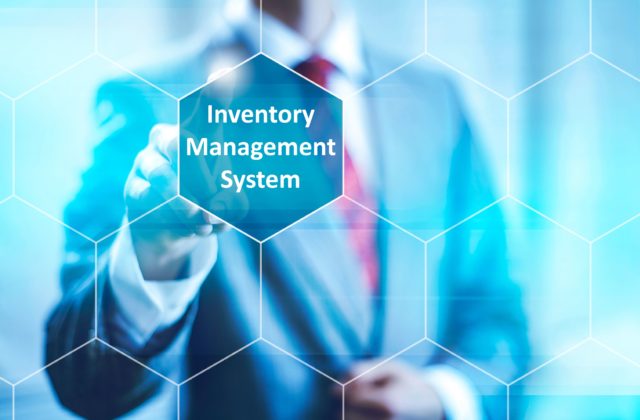Looking for best inventory management software? This post will show you 6 different best inventory management software. Knowing what’s in stock is crucial to developing a successful company. In a Stitch Labs survey, 67% of participants reported losing consumers after mistakes resulted in overselling or running out stock after an order was placed.1 The best inventory management software synchronizes in real time, making sure seamless transactions whether your clients shop online or in your shop.
However, the requirements of retail shops or dining establishments differ from those of a little manufacturing plant, so it’s crucial to pick the right tools for your company. We scoured more than 32 top-rated possession management systems to reveal easy-to-use tools using stock, warehouse, order and shipping management. To discover the best of the very best, we compared services based on industry-specific features, integrations and total cost.
The Very Best Inventory Management Software for 2022
– Best Overall: Orderhive
– Best for B2B Companies: inFlow
– Best for Retail Stores: Lightspeed Retail
– Best for Restaurants: Upserve
– Best for Manufacturing: Megaventory
– Best Free Option: Zoho Inventory
1. Orderhive
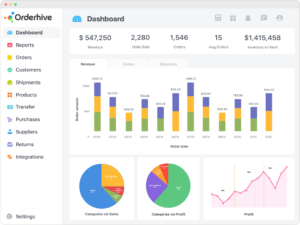
With innovative features and a lot of combinations, Orderhive is a cost effective solution that can quickly become your all-in-one inventory, order and fulfillment partner.
Pros
– Free for Shopify users
– 15-day totally free trial, no credit card needed
– Real-time multi-channel inventory updates
Cons
– No SKU generator
-$ 99 setup fee
– Mobile app presently only available on Google Play
Orderhive provides strategies to meet the needs of companies in a lot of markets, from big enterprises to start-ups. It stands out by offering endless stock-keeping units (SKUs) and numerous combinations in its feature-rich plans, making Orderhive the clear winner for best general inventory management software.
As a web-based software tool, Orderhive operates in all significant internet browsers, however the business advises utilizing Chrome and Firefox for a smooth experience. It also supports the very first in, initially out (FIFO) method and utilizes the Kanban method for reordering or replenishing stock.
It’s vast array of functions include:
– Kitting, bundling and composite assistance
– Automated purchase order (PO) development
– Bulk include, update, or erase items
– Link or unlink products with various SKUs or names
– Easily move stock in between warehouses
– Supports barcode scanning
– Multiple reporting alternatives consisting of cost of items offered (COGS).
– Management of the serial, batch, lot numbers, and expiry dates.
– Low-stock and out-of-stock informs.
– Zero and partial inventory dropshipping.
– Over 10 e-commerce automation tools.
Orderhive deals hundreds of combinations with popular apps like Etsy, Amazon, QuickBooks, WooCommerce and FedEx.
Pick from five Orderhive strategies with rates based upon month-to-month payments, but you can conserve 10% by paying every year. Orders fulfilled by Amazon (FBA) are complimentary and count versus your order limit. In addition, you’ll pay a one-time cost of $99 for setup and can add additional users for $50 per user per month. Orderhive’s rates page reveals you how they calculate prices and your dashboard features an usage meter to trace regular monthly costs. Pick from the following plans:.
– Free: Free for Shopify users for standard orders, shipping and inventory management features.
– Lite: $49.99 per month for the 200 orders and one user; orders above the limit cost $0.30 each.
– Starter: $149.99 per month for 1,200 orders and 3 users, with additional orders costing $0.15 each.
– Growth: $299.99 per month for 3,000 orders and five users; orders over the limit cost $0.12 each.
– Enterprise: For customized rates and unrestricted users, you can contact the business for a quote.
Connect with customer care through e-mail or chat 24 hours a day, 6 days a week. Orderhive also supplies an abundant resource center with e-books, a knowledge base and videos.
BEST FOR B2B COMPANIES
inFlow.
2. inFlow
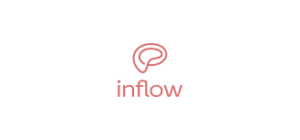
This user friendly platform provides a main inventory database and business-to-business (B2B) display rooms where customers can view and shop your items.
Pros.
– 14-day free trial, no charge on the card required.
– Two to six hours setup assistance.
– Over 30 reports.
Cons.
– Limited telephone assistance.
– Only the highest plan alternative includes endless integrations.
– Some features just available with a Windows download.
With inFlow, you get basic yet powerful software for makers, B2B wholesalers, online sellers and the retailers. Its robust reporting abilities and the shoppable B2B showrooms make it very best option for B2B business.
The inFlow software is actually web-based (inFlow Cloud) or computer-based (inFlow Premise), and offers an instinctive app for Android and iOS devices. It supports FIFO, moving typical and last in, first out (LIFO) approaches.
You can oversee your whole procedure utilizing inFlow, with features such as:.
– Business intelligence reports: 14 sales, seven acquiring and 14 inventory reports.
– Create general B2B display rooms or password-protected showrooms for unique clients.
– Vendor payments, order histories, and the order.
– Kitting, bundling, work order, and the assembly processing.
– Backorder abilities.
– Scan and generate barcodes.
– B2B showroom and portal creation.
– Email billings and invoices.
– Contact info and order histories.
You can connect your inFlow software to numerous tools including Shopify, QuickBooks, Amazon, WooCommerce and Squarespace.
Select from three strategies that you can upgrade or downgrade. Add-on services consist of expense of products (BOM) processing ($ 39-$ 129 monthly, depending upon the strategy), 5 additional users for $99 each month (only readily available on the Plus strategy), or access to the inFlow application programming user interface (API; $29-$ 59 monthly, depending on the strategy)). The following plans are based upon regular monthly payments, however you can conserve 10% with an annual payment:.
– Light: $79 each month for two users, one location, 100 orders, 2 combinations and two hours of setup support.
– Standard: $199 per month for 5 users, unlimited sites, 1,000 orders, 3 combinations, and 4 hours of setup assistance.
– Plus: $499 monthly for 10 users, endless areas, 10,000 orders, limitless combinations, and 6 hours of setup.
On inFlow’s website, you will find webinars, videos and knowledge base. Get the answer to the questions utilizing live chat and e-mail, or demand a callback Monday through Friday.
BEST FOR RETAIL STORES
Lightspeed Retail.
3. Lightspeed Retail
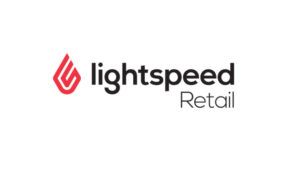
This mix point of sale (POS) and the inventory management program is developed for small retail shops with stock tracking tools, tons of integrations and excellent e-commerce capabilities.
Pros.
– 14-day complimentary trial, no charge card needed.
– Integrates with applications in 29 classifications.
Cons.
– Basic plan does not include e-commerce functions.
– Doesn’t deal with Android devices.
– May consist of unnecessary functions for small shops.
Lightspeed Retail is a real web-based inventory management tool designed to fulfill traditional and e-commerce shops’ needs. Its industry-specific choices and in-store sales functionality makes it the leading area in our best for retailers category.
The Lightspeed Retail program is cloud-based and features an iPad variation to have a look at clients on your sales flooring rapidly. It supports average expense and FIFO approaches.
Although Lightspeed Retail’s primary service is the point of sale, it provides excellent retail inventory tools. Plus, it incorporates with SkuVault, a warehouse management system for the increased capabilities. The top inventory features for the retail shops include:.
– Bulk change costs and automate discount rates.
– Track inventory levels and SKUs across numerous places.
– Allows for discount coupons, promotions, free gifts, and staff member discount rates.
– Syncs your e-commerce and in-store inventory.
– Set up consumer reorder standards.
– Calculates COGS.
– Works with bundled products.
– Import catalog files from vendors.
– Create and send order.
With Lightspeed Retail, you can integrate with numerous applications such as Kimoby, Pointy from the Google, RetailNext, and Retail Toolkit.
All Lightspeed Retail plans come with the Lightspeed Payments, which charges 2.6% plus $0.10 per card-present transaction and the 2.6% plus $0.30 per card-not-present transaction. All strategies come with one register, and additional ones cost $29 each month. The bundles are based upon yearly payments, however month-to-month strategies are readily available for $10 to $40 more than the annual plan each month. Lightspeed Retail prepares include:.
– Lean: $69 per month for fundamental POS and retail operations.
– Standard: $119 each month to add accounting and e-commerce functions.
– Advanced: $199 monthly to include Lightspeed’s commitment program and analytics.
– Enterprise: Provides all the services of Advanced strategy, plus extra features like personalized consultation and chosen Lightspeed Payment rates. Cost available on demand.
You can also access a full line of training videos on the Lightspeed’s YouTube channel and a knowledge base. Or get in touch with customer care 24/7 by chat, e-mail, telephone, or request a callback.
BEST FOR RESTAURANTS
Upserve.
4. Upserve
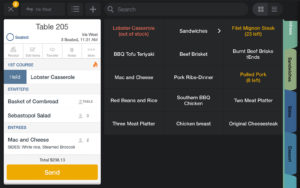
Upserve’s automated tools track your active ingredients and costs, with consumers reporting a “30% boost in profits and a 10% drop in time to table on orders”.
Pros.
– In-app barcode scanner.
– Recipe Costing.
– Real-time ingredient inventory deductions.
Cons.
– Expensive.
– Offline mode can be buggy.
Upserve is a thorough dining establishment management solution with a strong POS system and inventory capabilities. Its ability to track component utilize down to the ounce and other excellent features make Upserve the clear winner of our best for restaurants classification.
The software is very cloud- and app-based, with the mobile app working on Android and iOS devices, permitting you to supervise and run your dining establishment from anywhere. Upserve also gives an offline mode and you can select from a variety of hardware provided by Upserve.
Along with menu optimization and worker management tools, Upserve’s inventory software offers tools to help you:.
– Sync your recipes to the POS system.
– Automatically replenish amounts when you get brand-new stock.
– Use one-click getting for inventory.
– Manage vendors and materials.
– Scan inventory from your mobile app.
– Compare actual and predicted stock reports.
– Track real-time ingredient inventory.
– Receive notifies for low-stock items.
Upserve integrates with more than the 40 programs, including bar tracking, appointments and online buying tools.
All strategies utilize Upserve Payments for charge card processing with a flat rate of 2.49% plus $0.15 per deal. Pick from 3 Upserve plans, with inventory consisted of on the Pro and Pro Plus plans, while it’s an additional charge of $99 per month for the Core plan. Your choices include:.
– Core: $59 monthly per area plus a $60 terminal charge for POS, marketing, and reputation functions.
– Pro: $199 each month per website plus a $50 terminal charge for inventory features and a commitment program.
– Pro Plus: $359 monthly per place plus a $40 terminal charge for advanced account management and API gain access to.
Upserve supplies integrated POS training along with a website packed with info to get the most out of the software. You can likewise get in touch with customer support by phone, e-mail, or chat assistance.
BEST FOR MANUFACTURING
Megaventory.
5. Megaventory
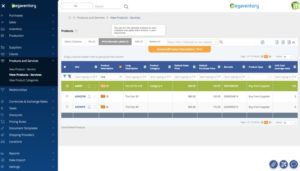
Easily handle your material-based inventory and get producing updates utilizing Megaventory.
Pros.
– 15-day complimentary trial.
– Simple to use.
– Handles up to 20 places.
Cons.
– No mobile app.
– No phone customer support.
– No videos or webinars for training.
Megaventory is an operations management service that assists you track the bundling or assembly procedure, and manage inventory, purchasing and satisfaction. It’s a simple system to carry out, making it best for small to medium-size production business.
As a cloud-based service, Megaventory actually runs well on different browser on any operating software (Windows, Mac, Linux) with an internet connection and the strategy supports 5 users, although you can include more. It works with the FIFO technique.
For those operating a real manufacturing plant, these features will keep you on top of everything:.
– Creates BOMs, packing slips, and work orders.
– Allows for user access approvals.
– Tracks customer and supplier contact information.
– Supports expiry dates and batch numbers.
– Bulk and fast updating options.
– Receive automatic stock informs for products.
– Barcode scanning and printing.
– Multiple reports including gross profit and inventory worth.
– Handles dropshipping and consignment sales and the purchases.
This software integrates with the Shopify, Magento, Zapier QuickBooks and WooCommerce. Plus, Megaventory deals an easy API so your team can connect to industry-specific programs.
Megaventory functions one strategy that costs $135 each month through a yearly payment or $150 for month-to-month payments. Additional users cost at least $50 per month per user and an extra $50 each month per 25,000 in transactions. If the Pro plan does not work for you, the business will produce a custom strategy. The plan limits are:.
– Up to 5 users.
– Two hours of training.
– 20 locations.
– 20,000 in items.
– 50,000 in deals.
– 20,000 in customers.
– Five integrations.
You can access the Megaventory’s knowledge base, get in-app guides, or request support through live chat or email.
BEST FREE OPTION
Zoho Inventory.
6. Zoho
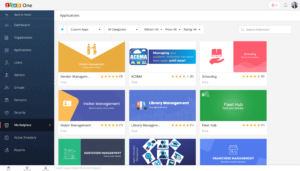
Zoho Inventory offers a totally free tool with automated workflows, out-of-the-box combinations and order fulfillment.
Pros.
– 14-day totally free trial.
– Multiple shipping choices.
– Intuitive desktop and mobile apps.
Cons.
– Low use limitations on complimentary plan.
– No serial or batch tracking on totally free strategy.
– Limited accounting integrations.
Zoho Inventory is a simple online inventory management software with a robust free version and inexpensive paid strategies. For the small businesses or the start-ups, Zoho Inventory lets you include products, satisfy orders and view inventory from any device, making it the very best free alternative.
This cloud-based program works on the desktops, tablets, or phones. You can also access it via a web browser or the Android and iOS apps. It supports the FIFO approach.
Secret functions of Zoho Inventory consist of:.
– Automatically order out-of-stock products or email order confirmations.
– Send real-time status notices to purchasers.
– Handles dropshipping and composite products.
– Real-time and automatic inventory updates across all channels.
– Comes with a consumer relationship management (CRM) program.
– Can accept backorders on out of stock products.
– Reports about inventory, customers, and sales.
– Barcode scanner abilities.
Incorporate your inventory software with Etsy, eBay, Amazon, WooCommerce and Shopify. Or choose from lots of shipping alternatives, payment gateways and all Zoho tools.
Zoho Inventory plans are based on use limits with prices based on yearly payments, or select a month-to-month prepare for $20 to $60 more monthly. You can likewise add-on 50 additional orders and shipping labels for $6 or pay $8 for each extra storage facility each month. The 4 plans, billed monthly, consist of:.
– Free: $0 for one warehouse, 2 users, 50 orders, 50 shipping labels, and 50 tracked deliveries.
– Standard: $79 monthly for 2 storage facilities, 3 users, 1,500 orders, 1,500 shipping labels, and 1,500 tracked shipments.
– Professional: $129 each month for 5 warehouses, 5 users, 7,500 orders, 7,500 shipping labels, and 7,500 tracked shipments.
– Premium: $199 monthly for 7 warehouses and 10 users, 15,000 orders, 15,000 shipping labels, and 15,000 tracked deliveries.
– Elite: $299 monthly for 15 storage facilities and 15 users, unrestricted orders, limitless shipping labels, and limitless tracked deliveries.
You’ll discover plenty of online documentation, small business guides and webinars. Plus, you can send out an e-mail or call 24 hr a day from Monday through Friday.
DECISION
The best inventory software for your business is one that supports the method you buy products and sell products. An e-commerce shop selling on Amazon has various requirements than a little producer, so it’s necessary to compare software based upon your specific sales channels and your inventory evaluation approach.
Our preferred inventory software is Orderhive, as it’s a budget friendly way to start selling throughout multiple sales channels. It offers company owner tools for automated real-time updates, barcode scanning and inventory reports. Its easy-to-use user interface assists you quickly bundle products for sale or set up a dropshipping organization.
What Is Inventory Management?
Inventory management is the procedure of tracking all inbound and outgoing materials and items. Nearly all businesses that develop or sell products keep inventory on hand. For instance, entrepreneurs might store retail items in a warehouse or store. Manufacturers require products for assembly and must track the movement of products from storage facilities to stores or sellers.
Last but not least, restaurants represent every shot of alcohol, food active ingredient, and paper goods.
When Do You Need to Use the Inventory Software?
Tracking many items or selling on numerous channels are 2 crucial times to utilize inventory software. Using a cloud-based tool can also save you time while offering you amount to visibility over your buying, shipping, and satisfaction processes.
Some retail stores or restaurants might utilize a POS system with inventory tools. But manufacturers require software to supervise the assembly side, while e-commerce shops require to keep all channels upgraded with real-time inventory counts.
Small company owners are reluctant to invest cash on inventory software due to the fact that they stress over their budget. But even complimentary services include valuable automation tools that can save time and prevent sales loss.
How Much Does Inventory Software Cost?
Nowadays, the majority of inventory software is cloud-based, where you pay a regular monthly or annual payment. Software providers may provide a 10% discount rate for yearly payments. Standalone inventory tools base costs on the number of orders, whereas POS systems with inventory functions use tiered strategies offering a more comprehensive range of features as you relocate to higher levels.
Furthermore, programs may have limits on the number of users, warehouses, and shop areas. And POS systems add additional fees when adding more terminals. Inventory management systems range from totally free to $300 or more each month. Higher-priced plans support business with high sales volumes and might offer more features, like innovative analytics, integration, or automation tools.
What Are the Benefits of the Inventory Management Software?
Setting up and using inventory management software reduces the time invested tracking inventory you purchase and the items you sell. However inventory management software offers many advantages for small company owners, including:.
– Reduced mistakes: Manual data entry is prone to errors. Inventory software permits you to scan barcodes and upgrade lots of sales channels automatically.
– Increased performance: Automation tools handle repeated jobs in the background, so business owners can concentrate on more pressing matters.
– Optimized inventory: Maintaining the right balance of stock is vital to your spending plan and client experiences. The software offers you exposure into this process.
– Higher profits: Accurate inventory tracking reduces waste and helps you catch theft, and performance increases assist you do more without adding to labor costs.
– Improved client experience: With a smooth and transparent purchasing and shipping procedure, clients receive better service, causing more sales.
How We Chose the Best Inventory Management Software.
We combed through more than 32 business to narrow our note down to the very best inventory management software. The software needed to be cost effective for small to medium-size businesses and supply a simple interface to make our list. Plus, we likewise looked at features and combinations tailored to particular industries, such as production, retail, and restaurants. Finally, we thought about consumer support options and special tools that assist business owners supervise the ordering and fulfillment procedure.

